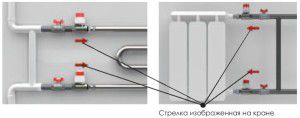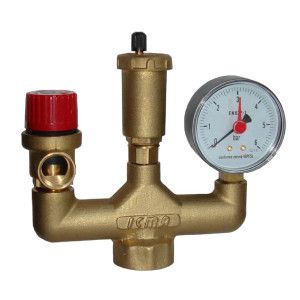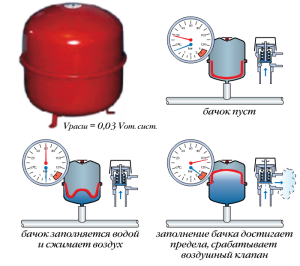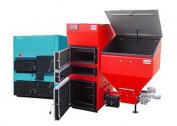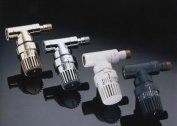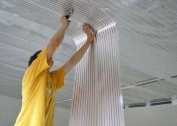Any type of heating should be a well-coordinated system, the operation of which in many respects depends on correctly selected components. First of all, attention is paid to the main nodes of the circuit - the boiler and radiators. But there is a certain kind of components, without which functioning is impossible in principle. These include accessories for heating systems: radiators, batteries, pipes, houses and apartments. What are they and what functions should they perform?
Purpose of accessories for heating
The principle of operation of the heating system is known to all. In an autonomous circuit variant, the boiler is connected to a distribution line (pipes). Heated water begins to circulate and through radiators gives off most of the thermal energy to the room.
Correctly selected components for water heating are necessary for the timely adjustment of the system parameters - the level of heating of the coolant, its distribution along the branched line. In addition, without them, installation is not possible. In particular, components for heating from polypropylene (fittings, plugs, distributors) are used to create a pipeline.
What should be considered when choosing components for heating?
- Design parameters - thermal conditions and coolant pressure values (for systems with forced circulation);
- After installation, accessories for heating boilers or batteries should not affect the performance and characteristics of the system. First of all, this refers to the throughput of the pipeline and the values of thermal return for radiators;
- Cost. This characteristic often directly affects the quality of components for heating aluminum radiators and steel counterparts. If possible, experts recommend purchasing all components from one manufacturer.
These are general requirements that in no way reveal the functional and design features of components for heating systems. Therefore, you need to consider each group individually.
Before installation, you need to find out the technical parameters of the heating elements. This can be done by reading the product passport, on the manufacturer’s website or directly with a consultant before purchase.
Shut-off and control valves for heating
Proper functioning of the heating is impossible without the installation of taps, valves and similar elements. They are necessary to partially or completely stop the flow of coolant in a particular section of the pipeline. These components for heating a private house are collectively called shutoff valves.
Valves and valves for pipes and radiators
Structurally, they are a mechanism in which it is possible to change the useful section of the line up to the complete overlap of water.
They are divided into 2 types - ball and needle. The first are used for operational shutoff of water. The ball mounted in the tap has a through hole. When its axis coincides with the direction of movement of the coolant, water flows freely along the highway. When offset, the actual system throughput decreases. The main advantage that these components have for heating systems is the ability to quickly shut off water. To do this, just turn the lever 90 °. If smooth adjustment is needed, cranes and needle-type valves should be installed.
When choosing and installing these components for water heating, the following factors should be considered:
- The maximum throughput should correspond to the same pipe parameter in this section of the system;
- Operational values of temperature and pressure;
- Their installation in the necessary order is carried out at the outlet of the boiler, before connecting each radiator, in the mixing feed nodes;
- Reliability. Best of all, accessories for solid fuel heating boilers made of stainless steel. But given their relatively high cost, brass models are most often chosen.
Installation of shutoff valves must occur according to a pre-compiled scheme. It is recommended to pre-calculate the parameters of each valve or valve.
During the first start-up of the system before the winter season, it is necessary to check the operability of all components for heating, and in particular - the binding of aluminum radiators.
Battery Regulator
This type of component for heating aluminum radiators includes thermostats. They perform the same function as stop valves, but with additional features.
The thermostat must be mounted on the inlet pipe of each radiator. The adjustable head sets the optimum temperature. If in the sensitive element of this component for heating a private house a deviation of the level of heating of the coolant is recorded, it will reduce (increase) its flow into the radiator.
The main characteristics of thermostats are:
- The degree of adjustment and the accuracy of the sensing element;
- The ability to install a servo to control the flow of coolant in automatic mode;
- Connection of a separate thermal head to create a unified system for monitoring the operation of heating in different sections of the highway.
The installation of accessories for heating radiators can be done independently. It is necessary that the mounting diameter of the thermostat matches the same parameter of the radiator inlet pipe.
To eliminate air congestion, as a component for a heating radiator, you need to install a Mayevsky crane - a manual bleed valve.
Heating system security
Another type of component parts for heating from polypropylene and steel are devices that ensure the safe functioning of the entire system. During heating, the temperature of the coolant or its pressure may be outside the normal range. To stabilize these indicators, a special type of component for heating systems should be installed.
Heating safety group
It consists of three elements - an air vent, a drain valve and a pressure gauge. It is installed at the point of the system where the temperature and thermal expansion of the water will be maximum - immediately after the boiler.
The air vent removes steam from the water line due to overheating. In this way, air jams in radiators and pipes can be prevented. The drain valve is a mandatory component for closed-circuit heating with forced circulation. During the overheating of the coolant, it expands, thereby creating excess pressure. An "excess" volume of water comes out through the drain valve pipe. But at the same time, it is necessary to provide an additional component for heating boilers - an automatic feed system.
The defining parameters for the security group are:
- The diameter of the mounting pipe - usually it is ½ ”;
- The ability to control the maximum pressure for activating the air vent and bleed valve;
- To install these components for heating from polypropylene, adapters must be purchased - metal / plastic.
But what else needs to be provided in the heating system for its complete safety? In circuits with forced circulation, an expansion tank of the membrane type is necessarily installed.
The outlet of the drain valve is best connected to the sewer system. So you can avoid getting the coolant on the floor.
Expansion tank
It is designed to stabilize the pressure with its small deviations. Also applies to accessories for heating in a private house, which are designed to prevent emergency situations.
Before purchasing an expansion tank, you must first calculate its optimal volume. The possibility of replacing an elastic membrane, which from time to time may lose its properties, is important. To do this, it is best to purchase models with a flange membrane mount.
In addition to the above, the main components of the heating system include measuring instruments - manometers and thermometers. They are installed at points in the pipeline where it is necessary to visually control the parameters of the temperature and pressure.
These are the main types of components for heating systems: radiators, batteries, pipes, houses and apartments. Their type and list depends on the parameters of the heating system. The constituent elements of pipelines (connecting, angular, branching) are selected based on the material of manufacture. For stand-alone systems, it is preferable to use plastic, as they are easy to install and do not require special skills and sophisticated tools.
More details about the features of a complete set of plastic pipelines are described in the video material:


